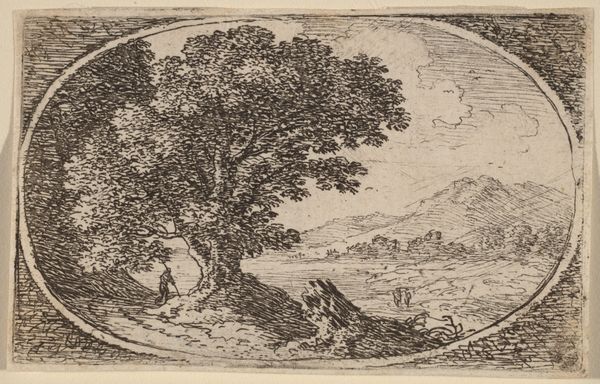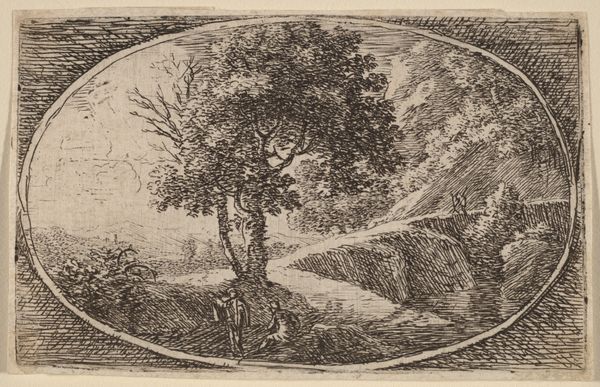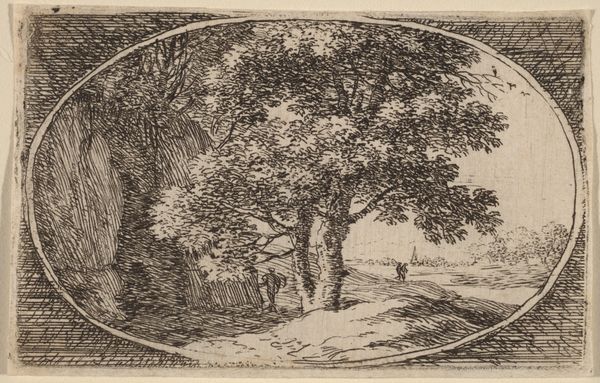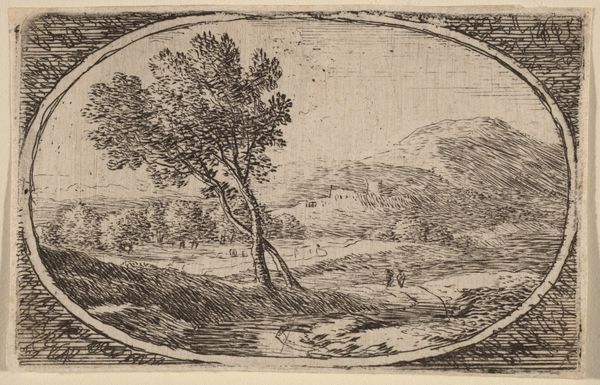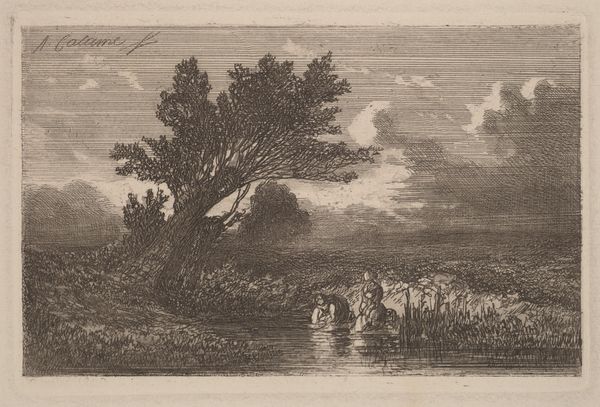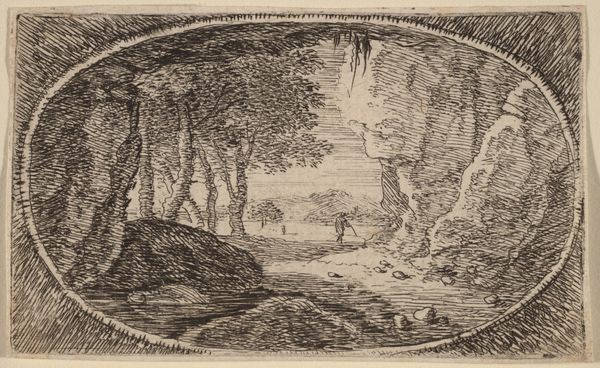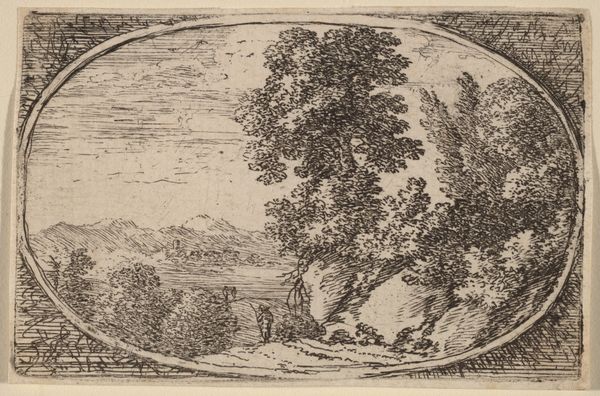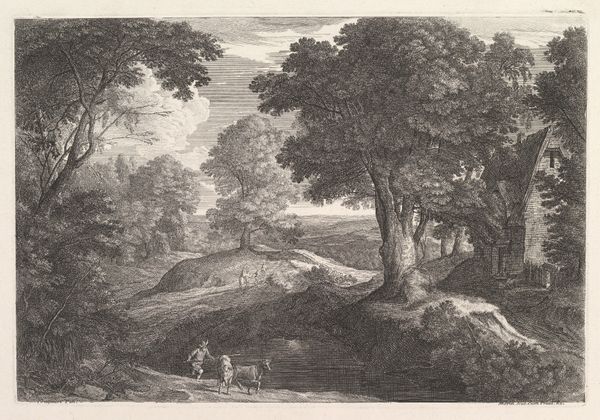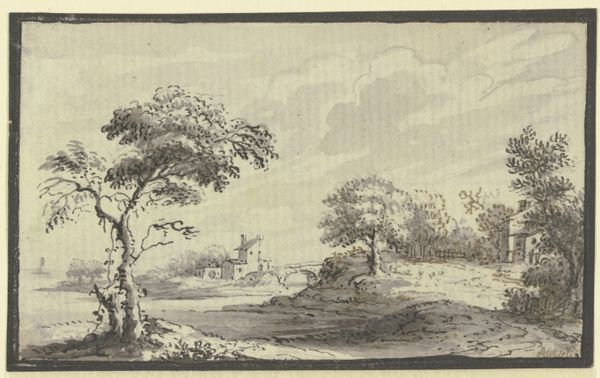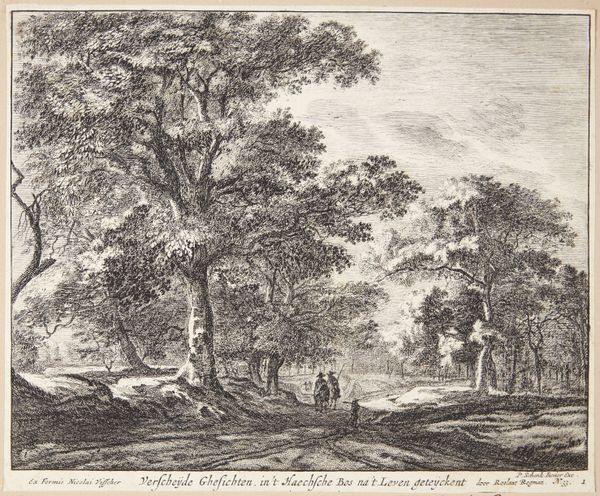
print, etching
#
baroque
# print
#
etching
#
landscape
#
etching
#
line
Copyright: National Gallery of Art: CC0 1.0
Curator: Let's turn our attention to this print, "Three Men Carrying Staffs," etched by Herman van Swanevelt. Its precise date isn’t known, but it certainly resonates with the visual language of the Baroque era. Editor: The most striking aspect for me is the almost dreamlike quality despite being just a small etching. It feels quite evocative, a blend of melancholic contemplation with the promise of some sort of journey or quest. Curator: A journey, certainly. Given the historical context, especially the movements across Europe linked to social upheaval, poverty, or religious persecution, I find the three figures potent in representing the struggles of migration and displacement during that era. Editor: That's interesting, I was more focused on what the staff might symbolize. Perhaps not just physical support, but spiritual guidance, the shared burden across generations. The slight bend in the figures implies some hardship to their undertaking. It almost recalls archetypal wandering figures or hermits from folklore. Curator: Indeed. Looking at the composition, Van Swanevelt subtly positions these men within a power dynamic, even. Notice the placement of the third figure on the horizon line; they appear solitary, separated, while the two in the foreground seem in conversation or companionship, hinting at the dynamics of community and the individual. And let's not forget, landscapes during the Baroque were often more than pretty scenes. They often spoke to the ideal, controlled version of nature which was being expressed in royal gardens and political ambitions. Editor: And that encircling frame! Is that ornamentation typical of prints from this time? Or do you see other meaning there? Almost like the figures are trapped in a looking glass, and what's their past versus where are they headed... Curator: The border certainly amplifies the emotional confinement, doesn't it? Baroque art thrived on controlled chaos, after all. The line work and attention to textural variety for each figure is striking considering these possible readings around issues of displacement. What we perceive might even speak to a shared inheritance of movement through political upheaval, echoing over and over. Editor: A piece much richer than initially meets the eye then. What a potent layering of meanings embedded within such a small piece. Curator: Agreed. The artist provides not just a visual narrative, but also an ongoing mirror of human experiences across the ages. It definitely feels resonant even in a world of increasing movement.
Comments
No comments
Be the first to comment and join the conversation on the ultimate creative platform.

